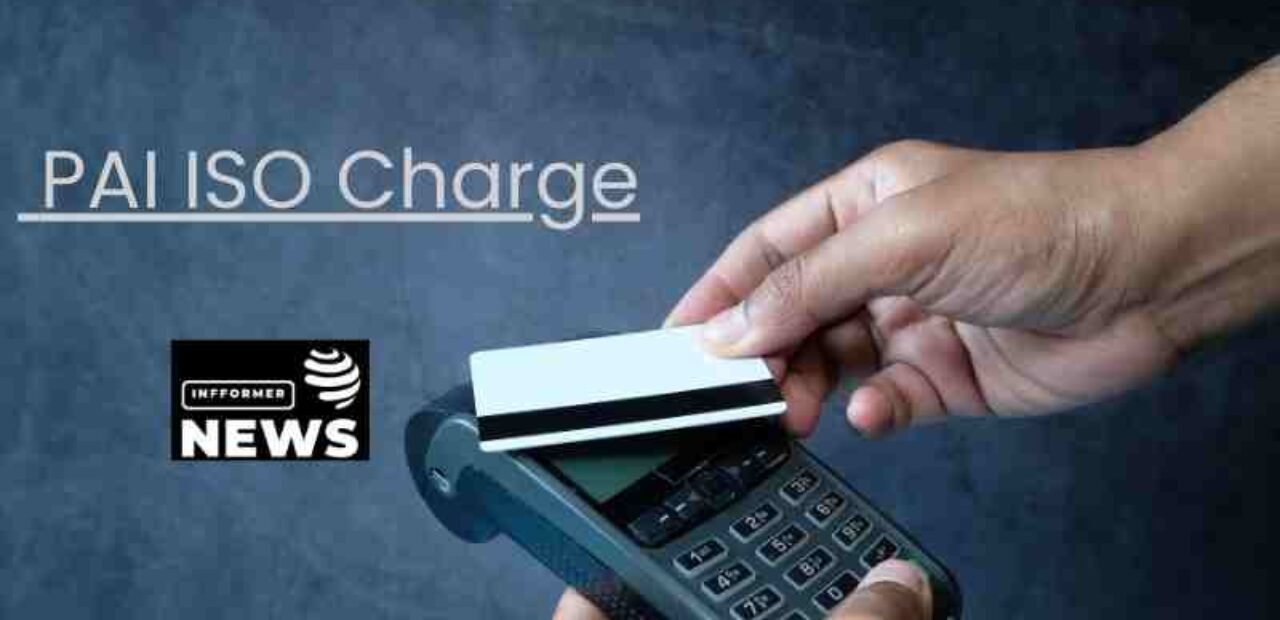Understanding PAI ISO Charge
The term “PAI ISO Charge” might appear complex at first glance, but it plays a significant role in the financial and payment processing industries. PAI, or Payment Alliance International, is a leading provider of electronic payment solutions, including ATM services, credit card processing, and point-of-sale (POS) systems. An ISO, or Independent Sales Organization, partners with banks and payment processors to facilitate transactions for businesses. When we talk about the “PAI ISO Charge,” we are essentially referring to the fees or charges associated with the services provided by PAI through its ISO partnerships.
These charges can vary widely depending on the specific services utilized, the volume of transactions, and the contractual agreements in place. Businesses that rely on electronic payment processing need to understand these charges to manage their costs effectively and ensure they are not overpaying for services.
The Role of PAI in Payment Processing
Payment Alliance International (PAI) has established itself as a key player in the payment processing industry. The company offers a wide range of services, from ATM placements to comprehensive credit card processing solutions. PAI’s partnership with ISOs allows them to expand their reach and offer their services to a broader range of businesses, from small mom-and-pop stores to large retail chains.
PAI’s role in payment processing involves facilitating transactions between merchants and banks. When a customer makes a payment using a credit or debit card, PAI’s systems process the transaction, ensuring that the funds are transferred from the customer’s account to the merchant’s account. This process involves multiple steps, including authorization, clearing, and settlement, each of which incurs a cost. The PAI ISO Charge is the fee associated with these services, and it is typically passed on to the merchant.
Breaking Down the PAI ISO Charge
The PAI ISO Charge can be broken down into several components, each of which reflects a different aspect of the payment processing service. Understanding these components is crucial for businesses that want to manage their payment processing costs effectively.
- Interchange Fees: These are fees set by the card networks (Visa, MasterCard, etc.) and are paid to the card-issuing bank. Interchange fees are typically a percentage of the transaction amount plus a fixed fee.
- Processor Fees: These are fees charged by PAI for processing the transaction. Processor fees can vary depending on the volume of transactions, the type of card used (credit vs. debit), and the risk associated with the transaction.
- ISO Fees: Independent Sales Organizations charge their fees for facilitating the transaction. These fees can vary widely depending on the ISO’s agreement with PAI and the specific services they provide.
- Additional Fees: There may be other fees associated with payment processing, such as fees for chargebacks, PCI compliance, and monthly maintenance. These fees can add up quickly, so it’s important for businesses to review their statements carefully and understand what they are being charged for.
Why Understanding PAI ISO Charge is Important for Businesses
For businesses that rely on electronic payments, understanding the PAI ISO Charge is crucial for managing costs and maximizing profitability. Payment processing fees can be one of the largest expenses for businesses, particularly those with high transaction volumes. By understanding the different components of the PAI ISO Charge, businesses can make informed decisions about their payment processing arrangements and negotiate better rates with their service providers.
Additionally, businesses can take steps to reduce their payment processing costs. For example, they can encourage customers to use debit cards instead of credit cards, as debit card transactions typically incur lower fees. They can also implement policies to reduce the risk of chargebacks, which can result in additional fees.
Negotiating PAI ISO Charges
One of the most effective ways for businesses to reduce their payment processing costs is to negotiate the PAI ISO Charge with their service provider. Many businesses are unaware that these charges are often negotiable, and they simply accept the fees as they are presented. However, with a little research and preparation, businesses can often negotiate lower fees and save significant amounts of money over time.
When negotiating PAI ISO Charges, businesses should be prepared to provide detailed information about their transaction volume, average ticket size, and the types of cards they accept. They should also be aware of the competitive landscape and be prepared to shop around for better rates if necessary. In some cases, businesses may find that they can save money by switching to a different payment processor or ISO.
The Impact of PAI ISO Charges on Profit Margins
Payment processing fees, including PAI ISO Charges, can have a significant impact on a business’s profit margins. For businesses with slim margins, even a small reduction in payment processing fees can make a big difference. It’s important for businesses to regularly review their payment processing statements and look for opportunities to reduce costs.
In addition to negotiating lower fees, businesses can also look for ways to optimize their payment processing setup. For example, they can implement technology solutions that streamline the payment process and reduce the likelihood of errors or chargebacks. They can also work with their payment processor to identify and eliminate any unnecessary fees or services.
Future Trends in Payment Processing and PAI ISO Charges
The payment processing industry is constantly evolving, and businesses need to stay informed about the latest trends and developments. One of the key trends in recent years has been the shift toward more transparent pricing models. Many payment processors are moving away from complex fee structures and offering more straightforward pricing options that make it easier for businesses to understand their costs.
Another trend is the increasing use of technology to streamline payment processing and reduce costs. For example, many businesses are adopting mobile payment solutions that allow them to accept payments on the go without the need for expensive POS systems. Additionally, advancements in fraud detection and prevention are helping businesses reduce their risk and avoid costly chargebacks.
As these trends continue to evolve, businesses will need to stay agile and be prepared to adapt their payment processing strategies to stay competitive. This may involve renegotiating their PAI ISO Charges, adopting new technologies, or exploring alternative payment processing options.
Conclusion
The PAI ISO Charge is a critical component of the payment processing landscape, and businesses need to understand it to manage their costs effectively. By breaking down the different components of the charge, businesses can identify areas where they may be able to save money and negotiate better rates with their service providers. Additionally, by staying informed about the latest trends in payment processing, businesses can ensure that they are getting the best possible value for their money.
In today’s competitive business environment, every dollar counts, and managing payment processing costs is an essential part of maintaining profitability. By taking the time to understand the PAI ISO Charge and explore ways to reduce it, businesses can improve their bottom line and position themselves for long-term success.
Read also: check





























































